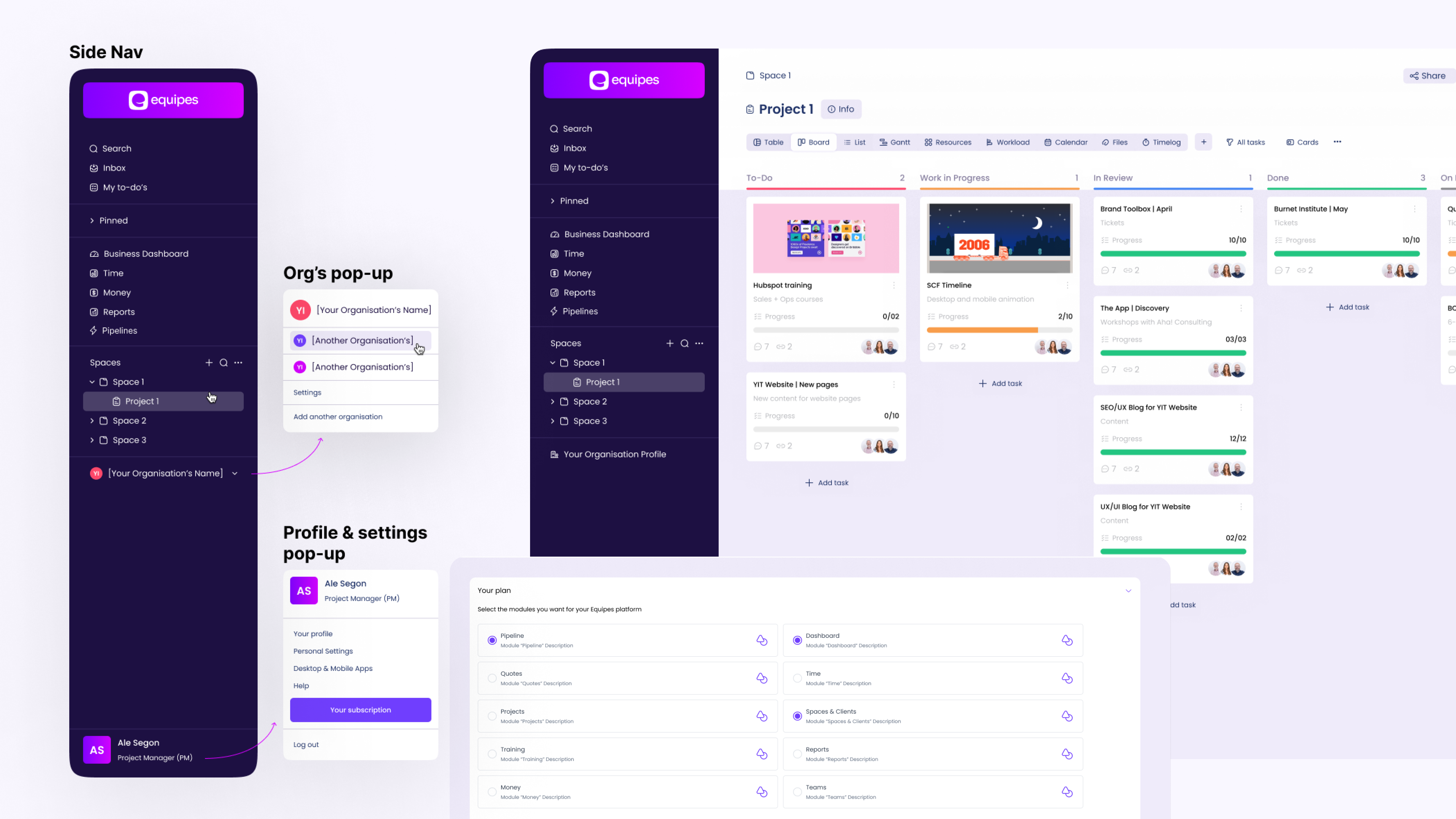The Challenge: Establishing an intuitive, scalable UX for Equipes.
Equipes is a business management system designed to eliminate inefficiencies, automate workflows, and provide AI-driven insights to help small businesses grow. For an innovative platform like Equipes to truly resonate with its audience, the user experience (UX) had to be seamless, intuitive, and accessible to teams with varying technical expertise. The challenge was twofold:
-
Ensure ease of use and modularity – Users should only see what’s relevant to them, avoiding overwhelming interfaces.
-
Validate product-market fit with an MVP – A clear, well-designed UX was essential to proving Equipes' value and gaining traction with early adopters.
While our Design System for a SaaS case study focuses on building the scalable foundation for Equipes' UI components, this project addressed the high-level UX and customer experience (CX) challenges needed to unlock product-market fit.
Approach: A human-centred UX strategy
Our team adopted a research-driven, human-centred approach to define the key usability principles for Equipes. We worked closely with small business owners—the platform’s primary users—to ensure that every interaction aligned with their real-world needs. Our process included:
-
User Research & Personas: Understanding the pain points of small business teams managing daily operations.
-
Accessibility & Usability Testing: Ensuring compliance with WCAG 2.1 AAA standards for an inclusive experience.
-
MVP Development: Prioritising core functionalities that drive efficiency, such as offline capabilities, automated reporting, and smart activity tracking.
-
Iterative Prototyping: Testing wireframes and interactive mockups to refine usability.
-
Modular UI Implementation: Using the Design System we previously established to maintain consistency across Equipes’ ecosystem.

Solution: A seamless, modular UX that scales
The final UX framework for Equipes focused on clarity, efficiency, and adaptability. Key highlights include:
-
A streamlined dashboard that dynamically adapts based on user roles and required functionalities.
-
Context-aware navigation that simplifies access to essential modules without unnecessary complexity.
-
Integrated AI and GPS tracking for automated time tracking, reducing manual inputs.
-
Offline-first approach, enabling remote teams to work seamlessly and sync data when online.
-
Scalable modular design, allowing businesses to enable or disable features as needed.
This UX strategy complemented the Design System, ensuring that the visual and interaction components remained consistent, reducing development time and maintenance costs.
Results
Solving UX challenges is key to unlocking product-market fit, and this project was a testament to that. By focusing on usability, accessibility, and adaptability, we empowered Equipes to scale efficiently while maintaining a best-in-class user experience.
For a deeper dive into how we established a scalable Design System for Equipes, check out this case study.